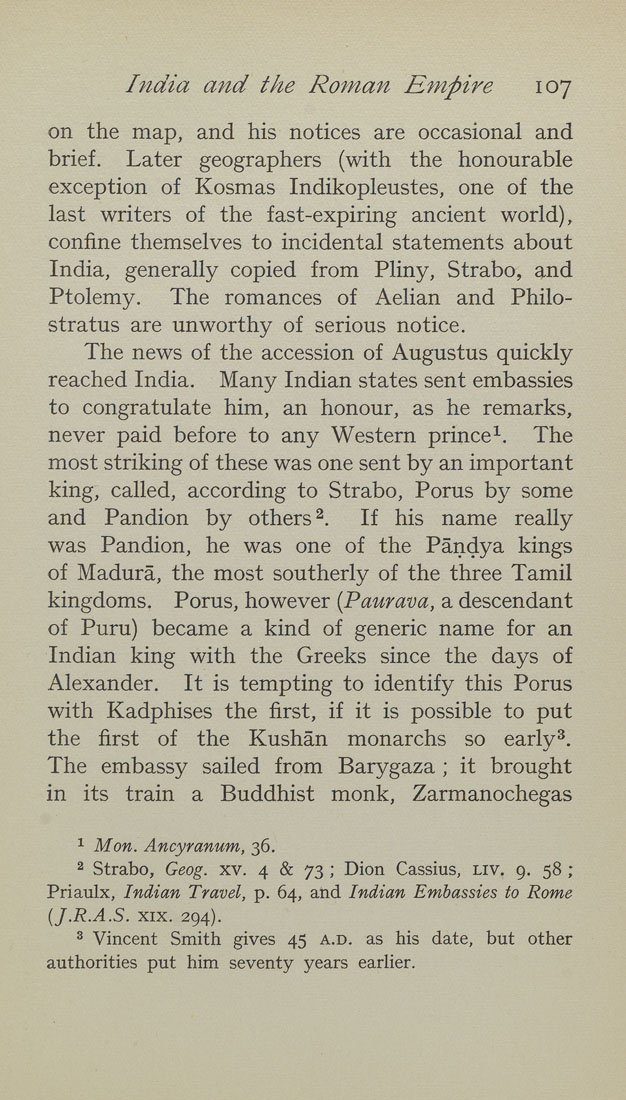India and the Roman Em^pire 107
on the map, and his notices are occasional and
brief. Later geographers (with the honourable
exception of Kosmas Indikopleustes, one of the
last writers of the fast-expiring ancient world),
confine themselves to incidental statements about
India, generally copied from Pliny, Strabo, and
Ptolemy. The romances of Aelian and Philo-
stratus are unworthy of serious notice.
The news of the accession of Augustus quickly
reached India. Many Indian states sent embassies
to congratulate him, an honour, as he remarks,
never paid before to any Western prince^. The
most striking of these was one sent by an important
king, called, according to Strabo, Porus by some
and Pandion by others^. If his name really
was Pandion, he was one of the Pandya kings
of Madura, the most southerly of the three Tamil
kingdoms. Porus, however {Paurava, a descendant
of Puru) became a kind of generic name for an
Indian king with the Greeks since the days of
Alexander. It is tempting to identify this Porus
with Kadphises the first, if it is possible to put
the first of the Kushan monarchs so early^.
The embassy sailed from Barygaza ; it brought
in its train a Buddhist monk, Zarmanochegas
^ Mon. Ancyranum, 36.
2 Strabo, Geog. xv. 4 & 73 ; Dion Cassius, liv. 9. 58 ;
Priaulx, Indian Travel, p. 64, and Indian Embassies to Rome
{J.R.A.S. XIX. 294).
^ Vincent Smith gives 45 A.d. as his date, but other
authorities put him seventy years earlier.
|








